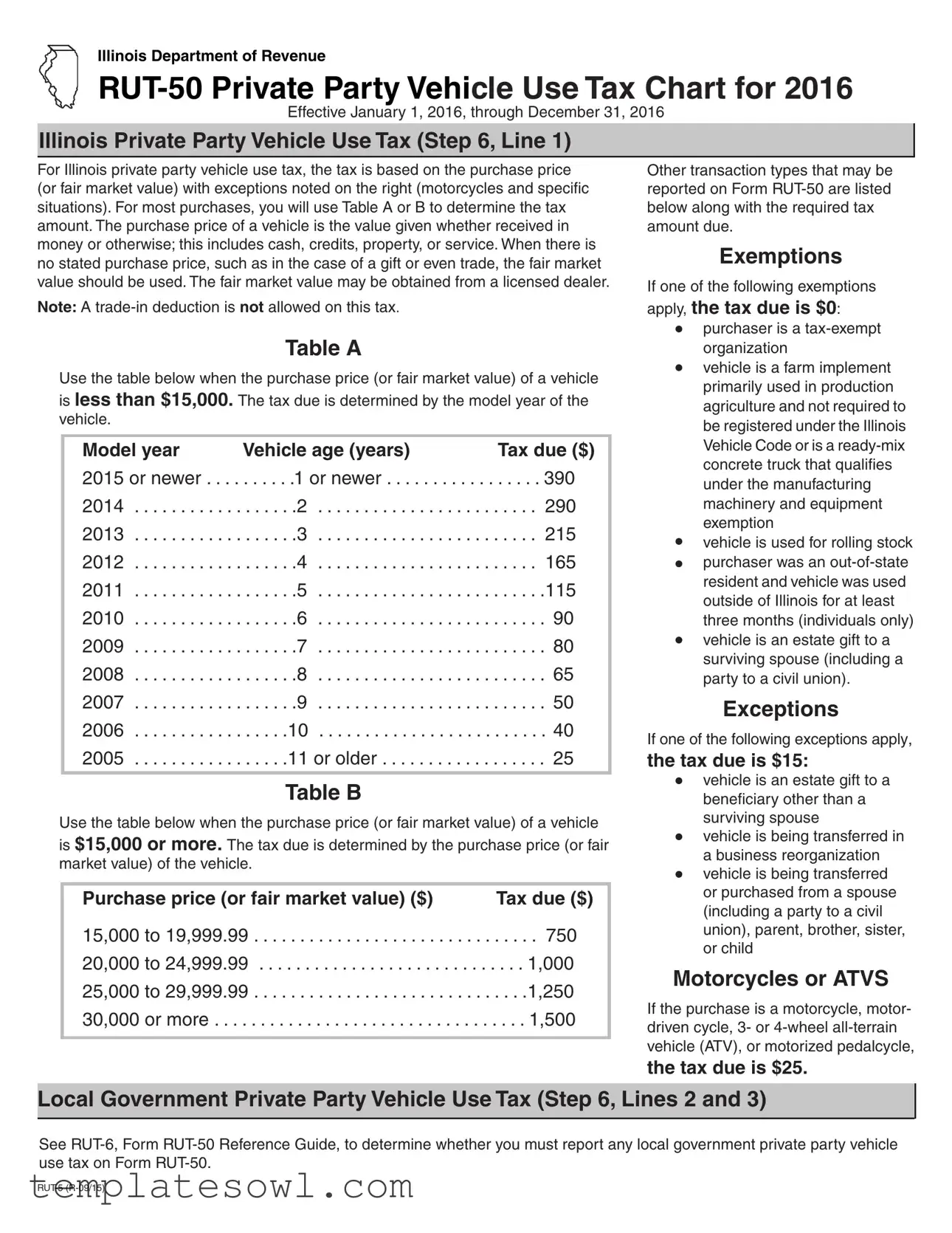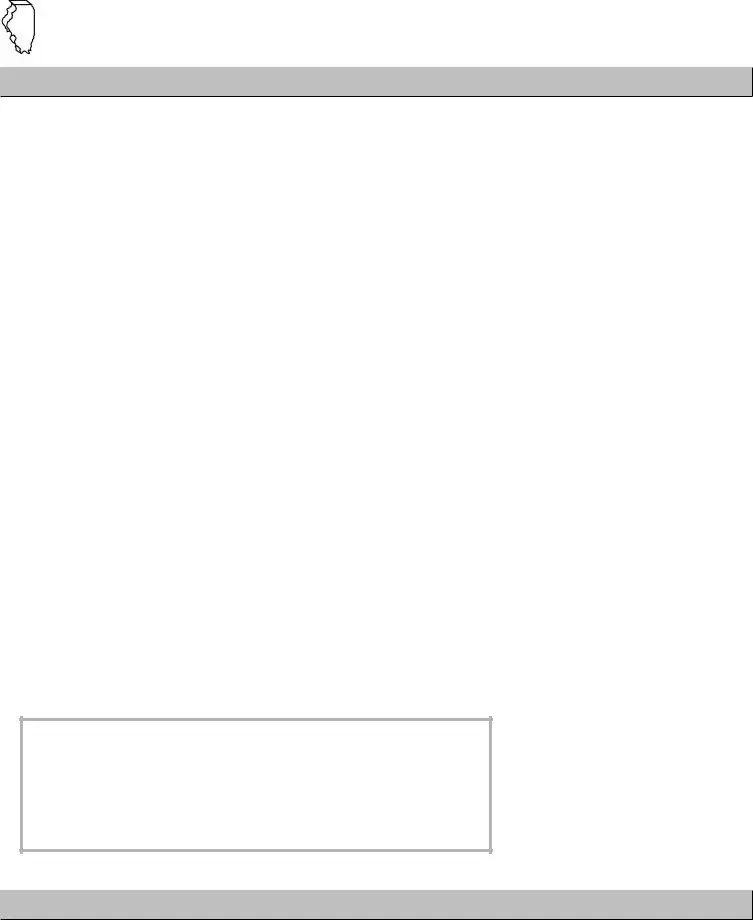What is the Tax Rut 50 form?
The Tax Rut 50 form is used for reporting Illinois private party vehicle use tax. This tax applies to individuals who purchase a vehicle from a private party. The form helps determine the tax amount based on the vehicle's purchase price or fair market value, taking into account certain exemptions and exceptions.
How is the tax amount calculated for vehicles under $15,000?
If the purchase price or fair market value of the vehicle is less than $15,000, you will use Table A from the RUT-50 form. The tax amount depends on the vehicle's model year, with specific tax amounts assigned to vehicles based on their age. For example, a vehicle from 2015 or newer has a tax due of $390, whereas a vehicle from 2005 or older has a tax due of $25.
What if my vehicle purchase price is $15,000 or more?
For vehicles priced at $15,000 or more, Table B is used to calculate the tax. The tax amount increases with the purchase price. For example, if your vehicle's fair market value is between $15,000 and $19,999.99, the tax due is $750. As the value increases, the tax can rise to as much as $1,500 for vehicles priced at $30,000 or more.
Are there any exemptions that apply?
Yes, certain exemptions allow for a tax amount of $0. These include: if the purchaser is a tax-exempt organization, if the vehicle is used for rolling stock, or if the vehicle is an estate gift to a surviving spouse. Additionally, if the purchaser was an out-of-state resident and the vehicle was used outside Illinois for at least three months, no tax is due.
What exceptions are available that change the tax amount?
Some exceptions apply which set the tax due at $15. This includes cases where the vehicle is an estate gift to a beneficiary other than a surviving spouse or if the vehicle is transferred within a family, such as between a spouse, parent, or child. It's important to understand these situations to calculate your tax obligation correctly.
What about motorcycles or ATVs?
If you purchase a motorcycle, motor-driven cycle, or an all-terrain vehicle, the tax due is a flat rate of $25. This simplifies the process as there are no variations based on the vehicle’s purchase price or fair market value in these cases.
Do I need to report any local government taxes?
If applicable, you must check RUT-6 and the Form RUT-50 Reference Guide to determine if local government private party vehicle use tax should be reported on Form RUT-50. This ensures complete compliance with all tax obligations related to your vehicle purchase.
Where can I find more information about the Tax Rut 50 form?
For more detailed information, including instructions and guidance, you can visit the Illinois Department of Revenue website or refer to the official documentation associated with the RUT-50 form. This can help you better understand your responsibilities and complete the form accurately.

